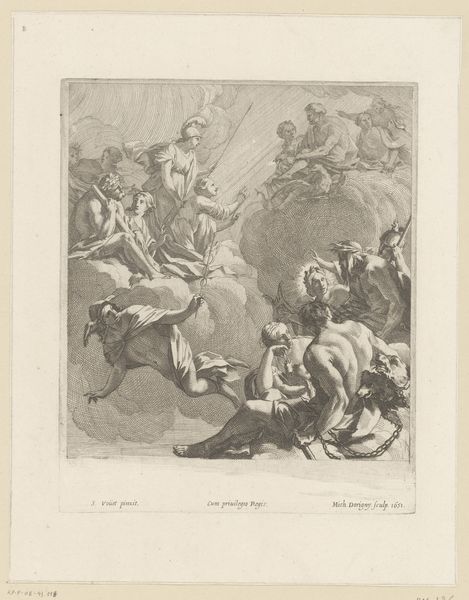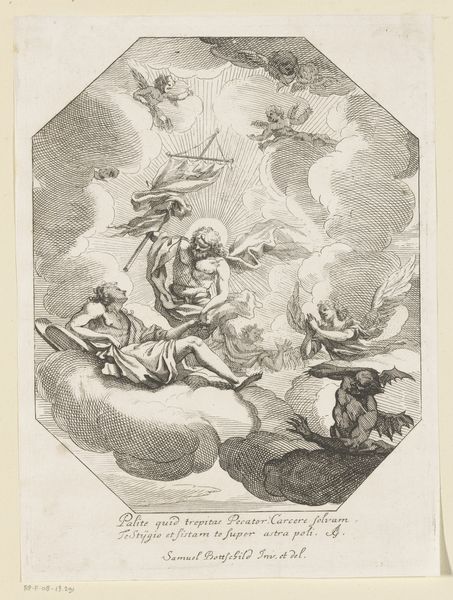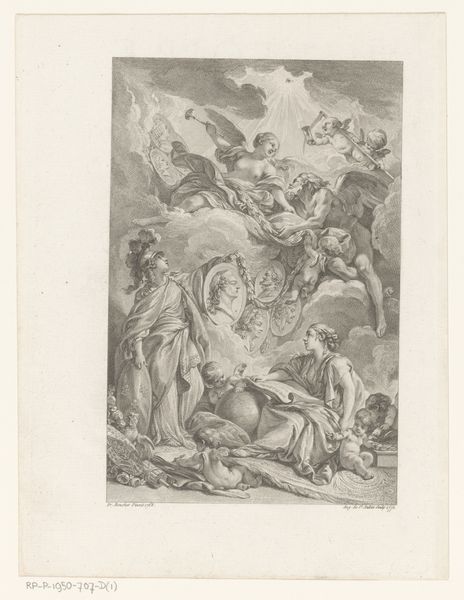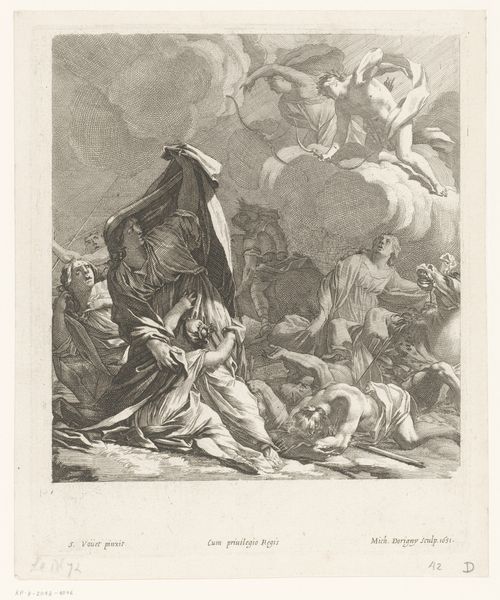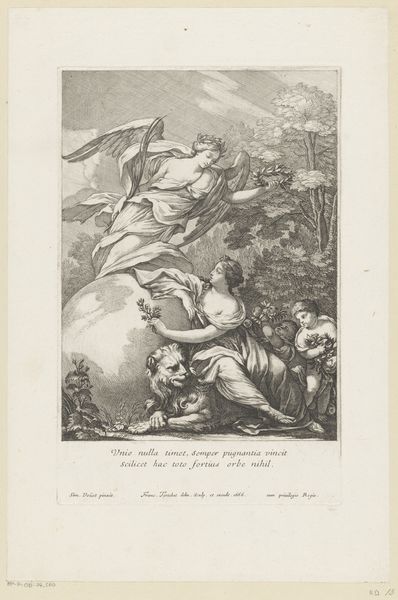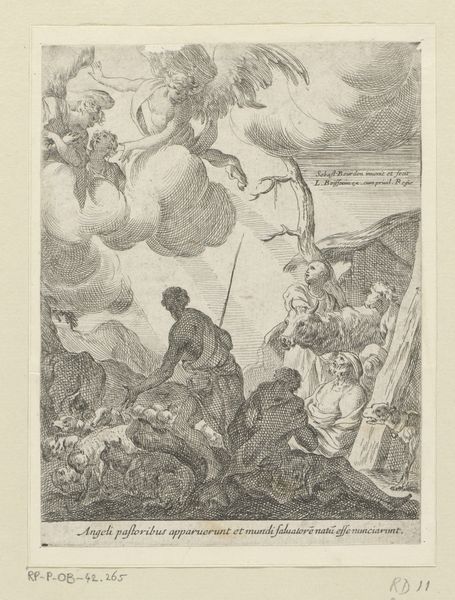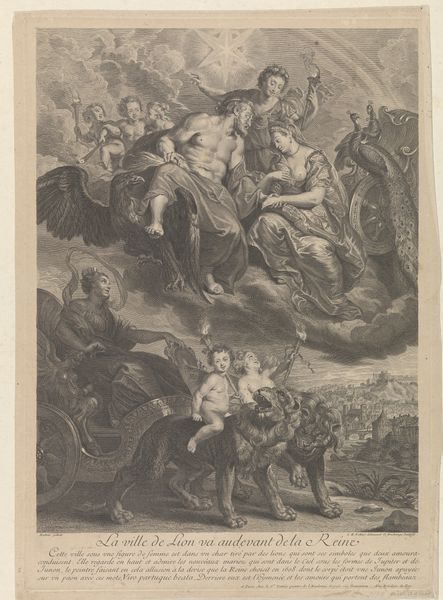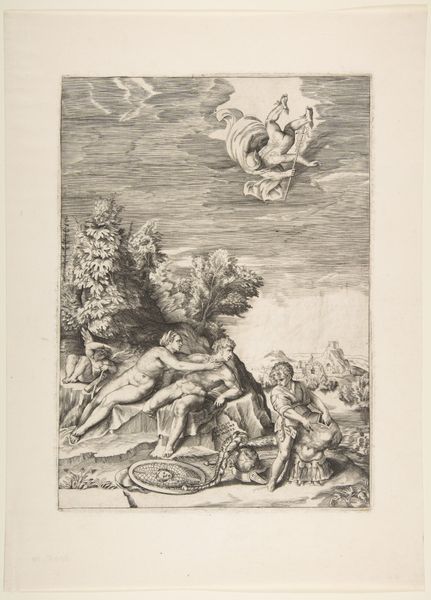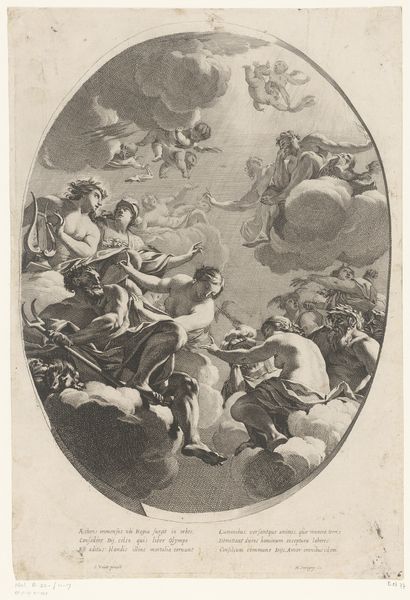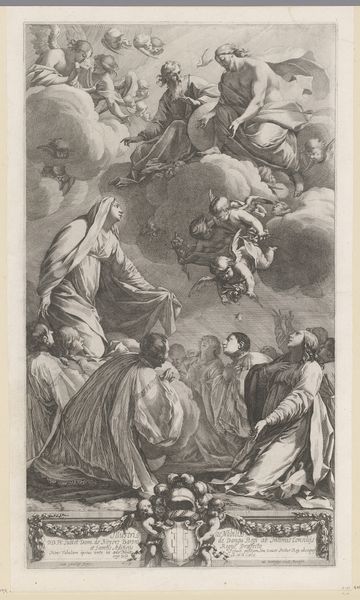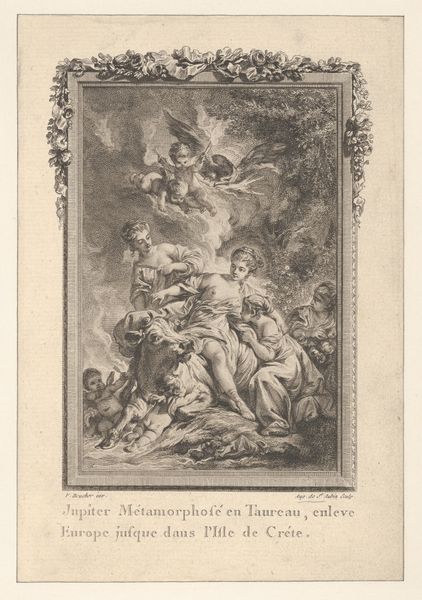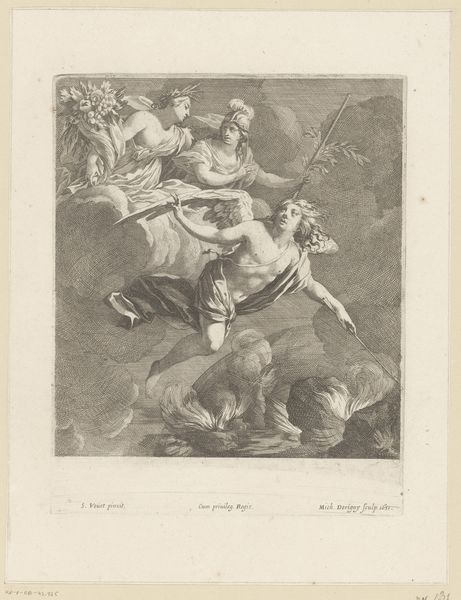
print, paper, ink, engraving
#
baroque
#
ink paper printed
# print
#
figuration
#
paper
#
ink
#
group-portraits
#
history-painting
#
engraving
Dimensions: height 419 mm, width 302 mm
Copyright: Rijks Museum: Open Domain
Curator: At first glance, this engraving feels incredibly ethereal, almost dreamlike. Is that something you pick up on as well? Editor: Indeed. The swirling forms and delicate lines contribute to that effect. We're looking at "The Family of Saint Eustachius of Rome," an ink print on paper crafted by Michel Dorigny in 1638. My eyes are immediately drawn to the labor required to produce such intricate detail in an engraving. Curator: Exactly. Consider the socio-political context: This was during the Baroque era. Family portraiture wasn't just documentation; it was often about reinforcing dynastic power, particularly amongst the religious elite. Note the bodies ascending into the heavens; they were known as military and land owning elite during their time on earth, whose success had roots in their conversion to Christianity. Editor: And this engraving technique, while sophisticated, was essentially a means of mass production, wasn't it? This would allow wider circulation of this image. Curator: Precisely. It enabled a specific narrative of pious triumph to be disseminated widely. These images offered ways to engage a large, broad population and to help those understand who this conversion was available to. This print then is an important primary source and a propaganda device. Editor: It underscores how art served the powerful, providing not only material objects but potent ideologies. Look at the angels, too –notice the means of religious power! Curator: They're not just aesthetic embellishments; their presence signifies divine endorsement of a hierarchical structure, a visual manifestation of religious power dynamics. We can view the act of labor through an intersectional lens here, too. It reveals how women contributed. Editor: And to think, behind that very image is the hands of the artist crafting this statement. Curator: It compels us to look closer at who benefits from these images, both in the past and present. Editor: For me, it’s a prompt to keep asking—what stories are told through materiality? And how does material engage culture, power, and gender. Curator: And for me, how did Michel Dorigny reinforce particular narratives?
Comments
No comments
Be the first to comment and join the conversation on the ultimate creative platform.
